Applying for exhibits, residencies, grants, and opportunities is part of the journey of a working artist. The process can be discouraging to say the least. I’ve heard it said many times: never give up on applying regardless of the chance of success. You never know where your work will land, and every opportunity is so unique.
I recently went through this application process for Artist Trust SOLA grant (Support for Old Lady Artists). It fits. 🙂 This grant was described to me during Artist Trust’s helpful one-on-one prep meeting as a lifetime achievement award. That is, the reviewers look at the breadth of your work over the years, even young work. I suppose they look for growth, seriousness, consistency (and who knows what else). This approach is very different from other grant applications, where the emphasis is on your current best work.
Applications are successful sometimes! In August, “Illumination”, a painting from my “Some Mornings” series will be shown at Port Angeles Fine Arts Center, in its “Resilient and Creative” juried exhibit. And “Some Mornings” – the title piece of the series – is on exhibit at Northwind Art Best Gallery “Lost Words” exhibit through August 1.
I see that the effort alone has its rewards, whether I win or lose. Articulating my work is an interesting exercise, and preparing samples is a discipline of curation and evaluation. In a longer post than usual, I thought I’d share the samples portion of my recent SOLA application. The narrative begins in 1999 and continues right on till now – and beyond.
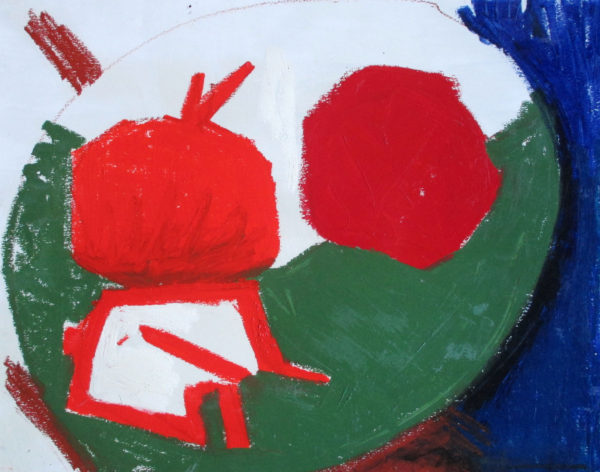
My first extensive thematic series was pomegranate still lifes in oil paint on
Rives BFK paper. I came to realize that pomegranates were a powerful metaphor for
the pregnant mystery of change and transformation – in this case, the impending end
of my 22-year marriage.
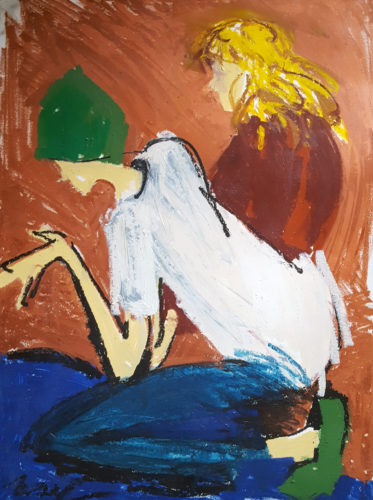
In 1999 and 2000, I created a body of work called “Adolescence” which captured the lanky loveliness of my teenage children, and also signified my own move toward autonomy, freedom and independence. I made large drawings in oil pastel of my kids in action and repose, and used those sketches as sources for the oils.
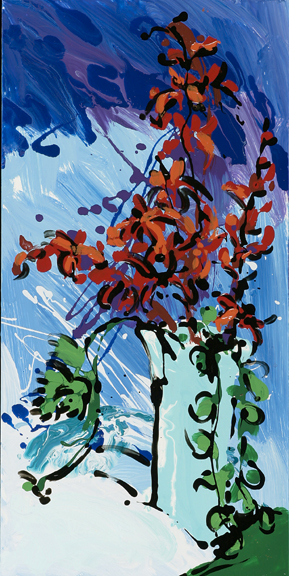
In 2002, I started working with acrylic enamel – a discovery by way of painting a ceremonial groundbreaking shovel. It was fluid, opaque, vivid. Its ease gave a freedom to my exploration. I started on paper for substrate, but eventually settled on Masonite panel for its non-absorbent qualities, which I continue to work with today.
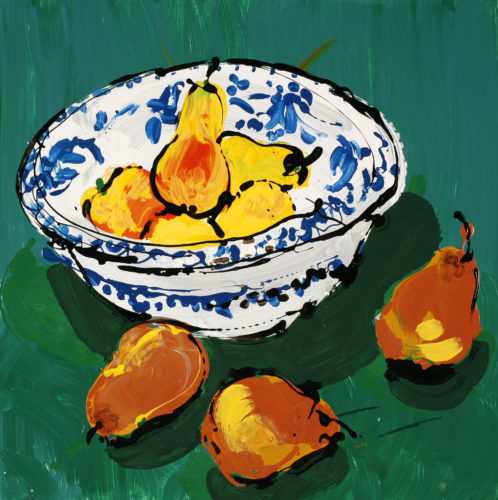
In 2004, I was finally able to buy a home, things got a little easier financially, I had a garden, I had more time with my kids. As I entered this period of domesticity and contentedness, I turned toward florals & still lifes which the expressed the abundance I felt.
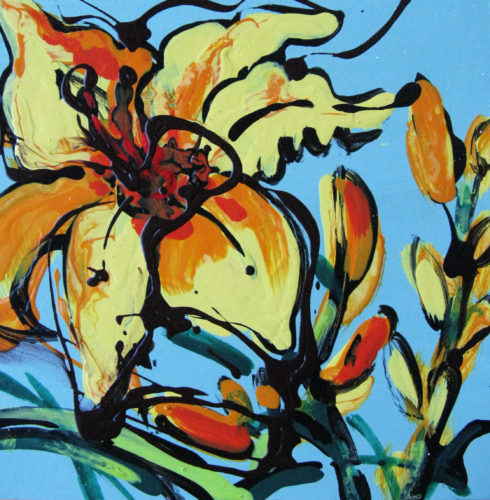
I continued painting florals for a couple of years. Always working from life – creating large loose sketches in oil pastels, then working from those in the studio with acrylic enamel. My expression started to loosen, a contrast (or reaction) to the structure of my day job as an art director.
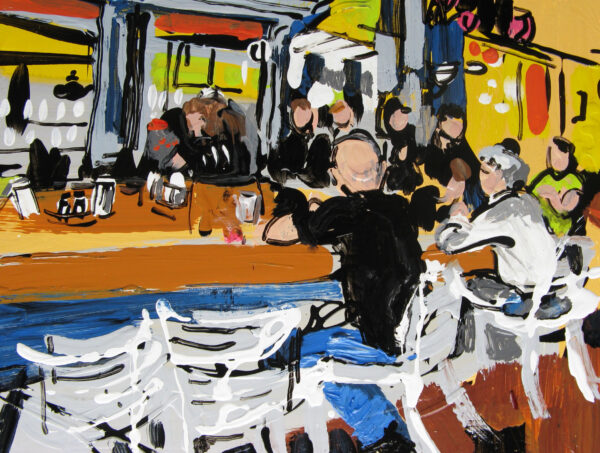
In 2010, I began a genre series called “Urban Landscape”. I used my quick and loose
travel sketchbooks as source material, finding the translation from one medium to
another propels a freedom for further abstraction.

In the “Urban Landscape” series – for the first time since design school – sometimes I worked from photos. On my way to work in downtown Portland, I would randomly point my Canon PowerShot out the window and just press the shutter, or surreptitiously as I walked down the street. From those imperfect images, street scenes emerged that conveyed the motion and vibrancy of city life.

In 2015, while I did not create a thematic body of work around florals as I did five years earlier, I returned to flowers as subject matter – and started incorporating textile designs as backdrops. I chose complex patterned material for the rich possibilities of abstraction and simplification. I was also going larger in scale in all my work.
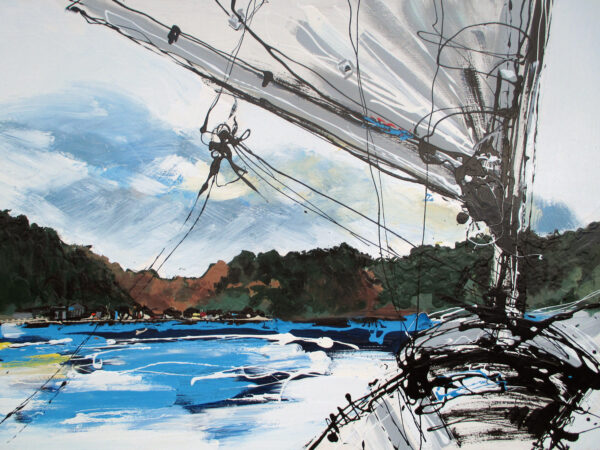
In 2016, we moved to Port Townsend, overlooking Discovery Bay. My infatuation
with the Peninsula landscape led to a series of environmental themes in large-scale
paintings: landscapes, madrones, waterways, agriculture.

I painted my first bird in 2008, and sold out the exhibit at a Portland art shop. I have been painting them periodically ever since. Now I feature birds specific to this region – towhees, pacific wrens, juncos, etc. Birds as theme is not my area of growth as an artist, but they are simple confections that make people happy.
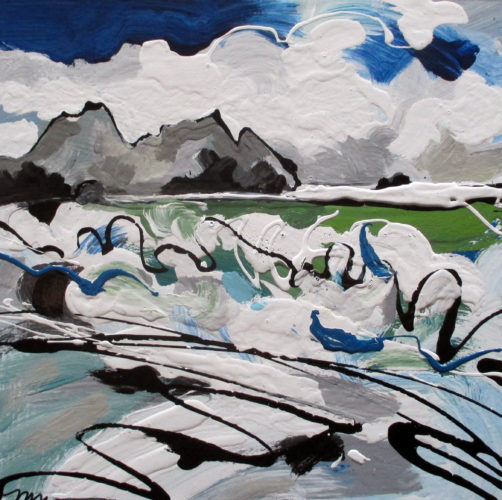
With this painting, I realized the richness of the method I was evolving. Sketching small format, plein air, in transparent watercolor, I translate to large format with the opaque fluidity of acrylic enamel. I work in layers, sometimes wet on wet, other times layering over a dry undercoat.

In 2019, I had a 2-week artist residency at Centrum in Fort Worden, Port Townsend. The expansive studio allowed me to work bigger than I ever had before. I could also work on 8 pieces at once – which meant I could paint all day – moving between pieces as the layers were drying.
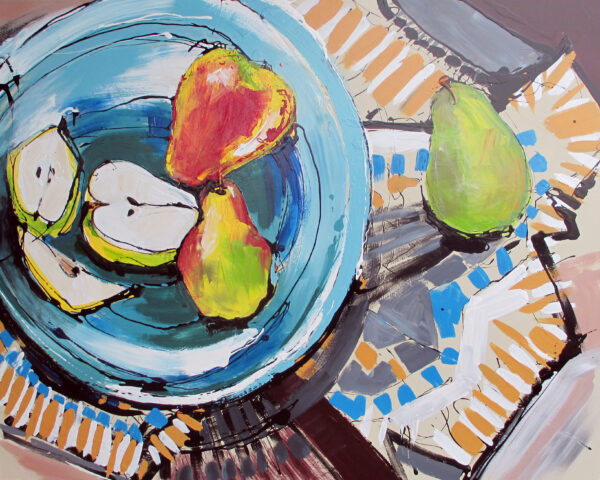
I worked on three thematic series during my Centrum residency: Waterways, Big
Fruit and Madrona – the themes signifying the preciousness of Salish Sea, our
agricultural ecosystem and the signature madrones of this region.

“Madrona” series began in 2019, and I worked with the theme steadily through the next 2 years in sizes from 12 x 12 inches to 48 x 60 inches. I might be done with the series, but maybe not – the abstraction possibilities are rich. These magical trees exert a hold on me, and poignant since their survival is uncertain.
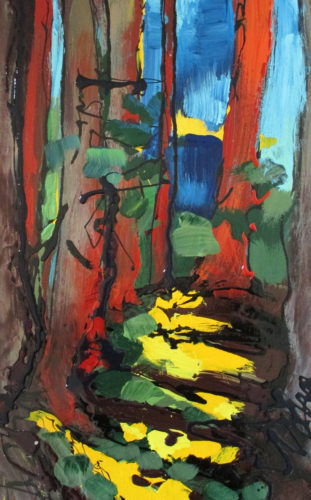
I include all the remarkable trees on the Peninsula in my “Madrona” series, because of the interdependence of the species on one another. My trees, waterways and food/harvest themes highlight the connection between art and environment, which was the focus of my public conversation with artists and scientists at Northwind Arts Center in May 2019.

With “Skagit Fields” I took the original watercolor sketch well beyond its’ initial
expression. In addition to pouring, brushing and drizzling the paint, I started using the
technique of wiping paint on and rubbing paint off, making use of the textural areas
to hold color.
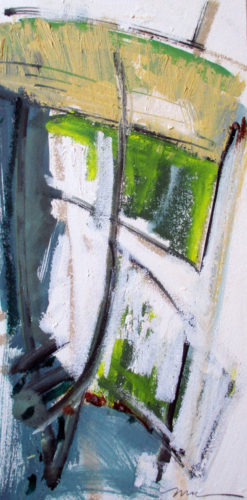
“Some Mornings,” my new series in progress, began with a chance encounter with poet Linda M. Robertson. We started swapping poem/art stories and she sent me a piece to work with for a class I was teaching. I use Linda’s poems as an entry point to my feelings of loss and the tenderness of transience.
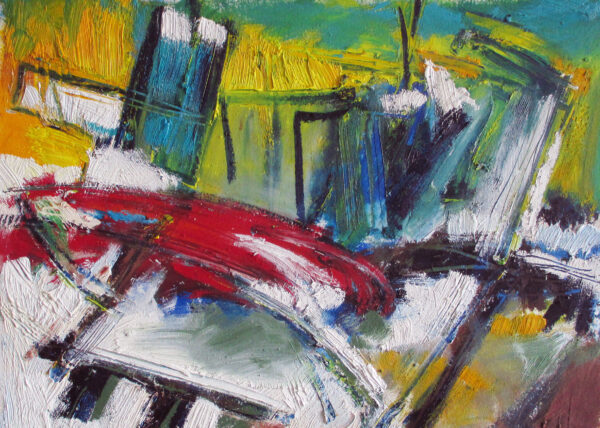
Working with Linda Robertson’s poems brings together aspects of my life: caregiving
for my husband with cancer, my Buddhist study and practice, my belief in art as a
path to well-being, and the inspiration and support from a remarkable group of
artists I meet with weekly.

The expansion of my work into conscious attention of felt states and moving away from explicit representation is a pivotal stage in my evolution as an artist. It is also a
turn back to working with oil bars and paints on paper, which I first worked with in 1999.

Linda’s poems reflect loss but also love, joy and gratitude: the world as it is. The connection between poetry and visual art is visceral and companionable, both exist in
a quiet place that can feed and nourish the heart. I intend to continue with “Some Mornings” series, deeply curious to see how it affects my acrylic enamel painting.